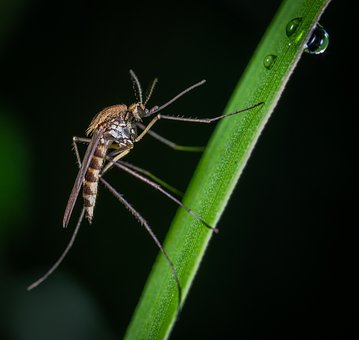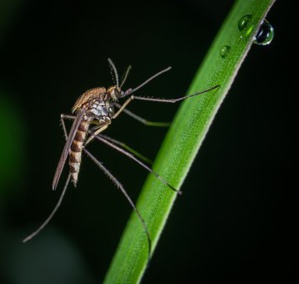Dailycsr.com – 21 July 2018 – Stephen D'Angelo reports that College of Human Ecology’s team has won a competition at a global level, wherein the team had to innovate on creating “radically sustainable environmental solutions” drawing their inspiration right from the natural world around. The winning team of Cornell came up with a “mosquito-control device” that mimics a carnivorous plant.
Utricularia vulgarisor, a carnivorous plant under common bladderwort genus, has been the inspiration for the device which has “dubbed the UPod”. The plant pumps water out through its trap bladders that are used for creating a vacuum in the water. In the process of pumping out water small insects get trapped.
Similarly, the UPod, run by solar energy, “pulls water and larvae into a tightly-sealed water chamber through a trap door”. The whole mechanism is based on a smart sensor system. Subsequently, the larvae, thus trapped, get “suffocated in the water chamber” and as new water gets pumped into the system the dead larvae are thrown out.
The device UPod has been created by a group of graduates, “Anna Gannett, Joey Sun and Paulina Villacreces”, with the help of their Professor Kathleen Gibson from the “Department of Design and Environmental Analysis in the College of Human Ecology”. The Global Design Challenge of Biomimicry Institute has selected UPod as one of the “eight project winners” of this “international design competition” wherein innovators are invited to know more about the “use biomimicry” in developing solutions to tackle climate change.
In the above mentioned winning team’s word:
“In the scoping process of our project development, we identified the expansion of mosquito-borne illnesses as a global human health problem related to climate change. Through our research we were able to find out that most of the mosquito control was in the form of vaccines or costly medicine, insecticides, fumigation, awning screens and others, but realized many people do not have access to these options and that these represent only short-term solutions.”
Moreover, the team also added that the increase in the global temperature due to the climate change results in “increased precipitation” which in turn contributes to the “expanding threat of mosquito-borne diseases” like chikungunya, dengue and malaria, while the existing systems of control mosquito proliferation can pose a threat to the environment as well as the human health.
Keeping in mind an “environmentally friendly” solution to curb the growth in larvae populations, which would also be able self sustain, come in an affordable range besides being reusable, the UPod was created to help “individuals, communities and nations” alike to control the “spread of mosquito-borne diseases”. While, the team added:
“Deaths due to mosquito-borne diseases and millions of dollars spent every year on costly medicine and mitigation practices provided the justification for the significance of this problem – we are really seeking to target the problem from the root cause.”
There were over 60 teams representing sixteen different countries at the “Global Design Challenge of Biomimicry”, while the winners bagged “cash prizes and an invitation to the 2018-19 Biomimicry Launchpad”, besides gaining eligible to “win the $100,000 Ray C. Anderson Foundation Ray of Hope Prize”. On a concluding note, the team stated:
“We hope to be able to expand our project concept using expertise from a broad range of disciplines, from biologists studying vector-borne diseases to materials engineers working on sustainable products. The momentum gained from working on the Launchpad program, in combination with the wealth of resources at Cornell, will help our team take the next steps in developing a product prototype.”
References:
3blmedia.com
Utricularia vulgarisor, a carnivorous plant under common bladderwort genus, has been the inspiration for the device which has “dubbed the UPod”. The plant pumps water out through its trap bladders that are used for creating a vacuum in the water. In the process of pumping out water small insects get trapped.
Similarly, the UPod, run by solar energy, “pulls water and larvae into a tightly-sealed water chamber through a trap door”. The whole mechanism is based on a smart sensor system. Subsequently, the larvae, thus trapped, get “suffocated in the water chamber” and as new water gets pumped into the system the dead larvae are thrown out.
The device UPod has been created by a group of graduates, “Anna Gannett, Joey Sun and Paulina Villacreces”, with the help of their Professor Kathleen Gibson from the “Department of Design and Environmental Analysis in the College of Human Ecology”. The Global Design Challenge of Biomimicry Institute has selected UPod as one of the “eight project winners” of this “international design competition” wherein innovators are invited to know more about the “use biomimicry” in developing solutions to tackle climate change.
In the above mentioned winning team’s word:
“In the scoping process of our project development, we identified the expansion of mosquito-borne illnesses as a global human health problem related to climate change. Through our research we were able to find out that most of the mosquito control was in the form of vaccines or costly medicine, insecticides, fumigation, awning screens and others, but realized many people do not have access to these options and that these represent only short-term solutions.”
Moreover, the team also added that the increase in the global temperature due to the climate change results in “increased precipitation” which in turn contributes to the “expanding threat of mosquito-borne diseases” like chikungunya, dengue and malaria, while the existing systems of control mosquito proliferation can pose a threat to the environment as well as the human health.
Keeping in mind an “environmentally friendly” solution to curb the growth in larvae populations, which would also be able self sustain, come in an affordable range besides being reusable, the UPod was created to help “individuals, communities and nations” alike to control the “spread of mosquito-borne diseases”. While, the team added:
“Deaths due to mosquito-borne diseases and millions of dollars spent every year on costly medicine and mitigation practices provided the justification for the significance of this problem – we are really seeking to target the problem from the root cause.”
There were over 60 teams representing sixteen different countries at the “Global Design Challenge of Biomimicry”, while the winners bagged “cash prizes and an invitation to the 2018-19 Biomimicry Launchpad”, besides gaining eligible to “win the $100,000 Ray C. Anderson Foundation Ray of Hope Prize”. On a concluding note, the team stated:
“We hope to be able to expand our project concept using expertise from a broad range of disciplines, from biologists studying vector-borne diseases to materials engineers working on sustainable products. The momentum gained from working on the Launchpad program, in combination with the wealth of resources at Cornell, will help our team take the next steps in developing a product prototype.”
References:
3blmedia.com


 Environment Friendly Mosquito Control Device Mimics Carnivorous Plant
Environment Friendly Mosquito Control Device Mimics Carnivorous Plant





 Companies
Companies